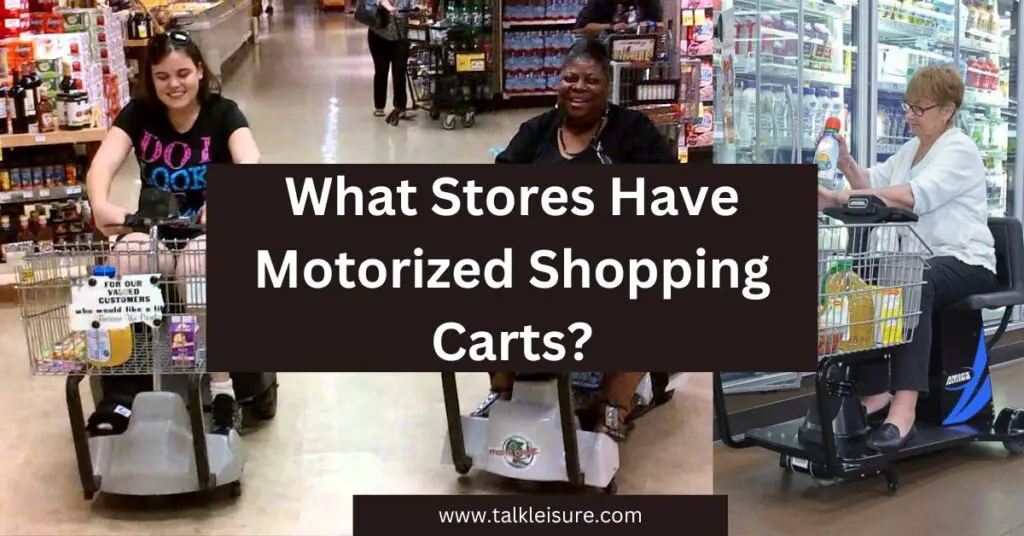Over the years, grocery shopping has transformed from a simple errand to a dynamic and multifaceted experience, adapting to consumers’ changing needs and preferences.
In the United States, the grocery retail industry is vital in supplying essential food and household items to millions of households.
From the traditional brick-and-mortar supermarkets that have been a staple for decades to the rise of online platforms offering convenience at our fingertips, the landscape of grocery shopping has undergone a remarkable evolution.
According to available statics, average grocery shopping can start from 30 minutes and span over one hour.
This article will delve into the fascinating world of grocery shopping in the USA, exploring the statistics, trends, and factors shaping this essential aspect of our daily lives.
Join us as we uncover the intriguing journey of how grocery shopping has evolved, from navigating aisles to the emergence of the digital realm, where a single click can bring the world of groceries to our doorstep.
What Is Grocery Shopping?

Grocery shopping is the regular task of purchasing food, beverages, and household items from a grocery store or supermarket.
It is essential as we regularly restock our kitchen and home supplies.
Grocery shopping can be an enjoyable experience for some and a tedious chore for others.
It involves navigating through aisles, selecting items from various choices, and deciding what to buy.
How Long Does It Usually Take You To Go Grocery Shopping?

The time it takes to complete grocery shopping varies from person to person.
Some people prefer to get in and out of the store quickly, armed with a well-organized shopping list. Others might take their time exploring different products and comparing prices.
On average, a typical grocery shopping trip can last anywhere from 30 minutes to an hour.
The time it takes to go grocery shopping can vary from person to person.
However, the duration may be influenced by various factors, such as the size of the grocery store, the number of items on the shopping list, and the individual’s shopping habits.
Some people prefer to breeze through the store quickly with a well-organized list, while others might take their time exploring different products and comparing prices.
Ultimately, the time spent grocery shopping depends on personal preferences and circumstances.
Grocery Store Statistics: Where, When, & How Much People Grocery Shop
Grocery shopping habits can differ based on location and culture.
Urban areas often have smaller, more frequent shopping trips due to convenience, while rural areas may have larger shopping trips done less frequently.
Weekends tend to be busier as people have more free time. The amount spent on groceries varies widely, with factors like family size, income, and dietary preferences playing a role.
| Grocery Store Statistics | Data |
|---|---|
| Number of Grocery Stores | 38,307 (2021) |
| Average Household Spend | 9.5-13% of Budget |
| Popular Shopping Time | Weekends |
| Preferred Shopping Type | Supermarkets |
| Growth of Online Shopping | +43% (2020-2021) |
| Grocery Retail Employees | 4.5 million (2020) |
| Annual Sales Revenue | $731.1 billion (2020) |
| Food Wastage Rate | 30-40% |
5 Facts About Grocery Shopping You May Shock

There are many facts that you may have unnoticed and ignored for years about grocery shopping.
However, research shows that around 60-70% of purchases are unplanned.
Stores strategically place items to entice shoppers to buy on impulse. Also, on average, men spend less time grocery shopping than women.
They often go directly to the items they need without browsing.
The busiest grocery shopping days are typically Saturdays and Sundays.
Shoppers plan for the week ahead or host gatherings.
And now, stores are designed to make you explore more. Essential items are scattered to increase the chances of additional purchases.
Also, with the rise of technology, more people now use their smartphones to compare prices and find deals while shopping. So there are five facts you should pay attention to.
How Long Does The Average Shopper Typically Spend In The Grocery Store?
The average time spent in a grocery store can vary based on factors such as the size of the store, the shopper’s familiarity with the layout, and their shopping habits.
However, studies suggest that most people spend around 45 minutes to an hour during each visit.
Some shoppers may spend more time if they enjoy browsing and exploring new products, while others who shop with a clear list and purpose might spend less time.
How Many Items Does The Average Grocery Store Carry?
A typical grocery store can carry anywhere from 20,000 to 60,000 different items.
The number varies significantly based on the store’s size, location, and target demographic.
Supermarkets in urban areas tend to have a wider selection, catering to diverse preferences and international cuisines.
Smaller stores in rural areas might have a more limited selection, focusing on essential products for the local community.
What Are Shoppers Spending The Most Money On?
According to grocery shopping statistics, shoppers spend the most on meat, dairy products, and fresh produce.
These items form the core of a balanced diet and tend to have shorter shelf lives, prompting more frequent purchases.
Non-essential items like snacks, desserts, and beverages contribute to grocery bills.
Understanding your spending habits can help you make informed choices and save money on each trip.
Do You Run To The Store Right Before Dinner?
Many people fall into the habit of rushing to the grocery store just before dinner time to pick up last-minute ingredients.
While it might seem convenient, it can lead to hasty decisions and impulse buys.
Instead, try to plan your meals for the week ahead and create a shopping list.
Shopping with a list can save time, reduce stress, and prevent unnecessary purchases.
Why Should You Avoid Shopping Carts To Stop Overspending?
Using a shopping cart might be convenient but can also lead to overspending.
Carts can unconsciously encourage shoppers to fill them up with more items than they originally intended to buy.
Opt for a handheld basket instead, as it limits the number of items you can carry and makes you more conscious of your purchases. This small change can prevent impulsive buying and help you stick to your shopping list.
Do You Typically Shop On The Weekends?
Weekends are popular shopping times for most people since they have more free time. However, weekends can also be crowded and lead to longer checkout lines. Consider shopping during weekdays or off-peak hours to avoid crowds and save time. Some grocery stores may have special weekly discounts or promotions to attract shoppers during quieter times.
Facts About Grocery Stores

Grocery stores in the USA are integral to daily life, providing millions of people with essential food and household items. Here are some facts about these establishments:
- Number of Grocery Stores: As of the latest data available, there are over 40,000 grocery stores in the USA. These include supermarket chains, local grocery stores, and specialty markets.
- Employment Opportunities: Grocery stores are significant employers, offering job opportunities to a vast workforce. The grocery retail sector is estimated to employ around 3.3 million people nationwide.
- Sales Revenue: Grocery stores generate substantial revenue in the USA. In recent years, the total annual sales from grocery retail have surpassed $600 billion.
- Food Wastage: Despite being crucial food suppliers, grocery stores also contribute to food wastage. It’s estimated that approximately 10% of food purchased from grocery stores ends up being wasted, adding to the broader issue of food waste in the country.
Grocery stores play a vital role in meeting the daily needs of consumers, offering a wide variety of products and creating employment opportunities while facing challenges related to food wastage and sustainability.
Grocery Shopping Statistics

In the USA, grocery shopping is a massive industry that caters to the needs of millions of households.
According to recent statistics, Americans spend a significant portion of their income on groceries, with the average household allocating around 10-15% of their budget to food purchases.
Supermarkets are the most popular choice for grocery shopping, and thousands are spread nationwide.
The grocery retail sector is highly competitive, with major chains vying for consumer loyalty through various marketing strategies and discount programs.
Online grocery shopping has also seen a surge in popularity, especially in urban areas, offering convenience and time-saving options to busy consumers.
It’s estimated that a considerable percentage of Americans now prefer to buy groceries online, contributing to the growth of e-commerce in the food retail industry.
Overall, grocery shopping in the USA reflects consumers’ diverse preferences and needs, with a constant drive for innovation and convenience shaping the market.
Average Grocery Store Customers Per Day?
A medium-sized grocery store can expect around 1,000 to 3,000 customers daily. However, this number can vary significantly depending on the store’s location, population density, and competition in the area. Stores in busy urban centers may see a higher footfall, while those in suburban or rural areas might have fewer daily customers.
Average Number Of Items Purchased At Grocery Store
The average number of items purchased in a grocery shopping trip is approximately 30 to 40. This includes food items, beverages, personal care products, cleaning supplies, and other essentials. Larger families or those with specific dietary needs may purchase more items, while smaller households might buy fewer items per trip.
About How Many Times Do You Go Shopping Per Week?
The frequency of grocery shopping trips varies from person to person and family to family. On average, most people go grocery shopping around 1 to 2 times per week. However, some individuals or households may prefer to shop more frequently to ensure fresher produce and reduce the need for extensive storage.
How to Save Time by Grocery Shopping Every Two Months?

You can follow a few things to save time by grocery shopping every two months.
Firstly create a comprehensive shopping list in advance.
Stock up on non-perishables, canned goods, and frozen items with long shelf lives.
Buy fresh produce in bulk and freeze portions for later use. Plan meals and use versatile ingredients to minimize waste.
Utilize online shopping and delivery services for heavier items. Keep track of inventory and restock essentials in between shopping trips.
Here are a few more things to follow:
Buy From Wholesalers: Consider shopping at wholesale stores for non-perishable items with long shelf life. Buying in bulk can save you time and money in the long run.
Meal Prep: Plan your meals for two months, and create a comprehensive shopping list. This way, you can purchase all the necessary ingredients in one go.
Make A Grocery List: A list ensures you won’t forget essential items and helps you focus on your needs, reducing browsing time.
Get Frozen Food And Non-Perishables: Opt for frozen fruits, vegetables, and non-perishable items for two months. These items have a longer shelf life and can last until your next shopping trip.
How long does Clothes Shopping Take?

Clothes shopping can vary widely depending on personal preferences, store selection, and the purpose of the shopping trip.
Some individuals love trying on different outfits and may spend several hours browsing, while others might be more efficient and spend around an hour to find what they need.
Online shopping has also become popular, allowing people to shop from the comfort of their homes and potentially save time.
The duration of clothes shopping varies depending on the individual’s preferences, the number of items needed, store availability, and crowd levels.
On average, it takes approximately 1 to 3 hours for a typical shopping trip. However, more extensive shopping excursions or visits to multiple stores might extend the time to 4 to 6 hours.
Online shopping can also be a quicker alternative, taking around 30 minutes to 2 hours, depending on browsing speed and decision-making. Ultimately, the time spent clothes shopping will differ for each person and situation.
Do You Spend Much Time Shopping For Food?

The grocery shopping time can add up over a year, especially if you make frequent trips.
Finding a shopping routine that works best for you and fits your schedule.
Planning, making lists, and avoiding impulsive purchases can streamline grocery shopping and help you spend less time in the store.
Determining if you spend much time shopping for food requires a systematic approach.
First, keep a shopping journal for at least a week to track your grocery activities, noting the date, time spent, and locations visited. Calculate the average time spent per week to set a baseline.
Next, compare your data with averages for individuals or families in your area. Reflect on your lifestyle and shopping habits, such as the frequency and efficiency of your trips.
Consider if online shopping is a part of your routine, as it can save time. Assess the time spent on meal preparation, as this can impact shopping frequency.
Identify areas to optimize your shopping habits, like creating lists based on meal plans or buying in bulk.
Finding the right balance will allow you to dedicate time to other activities while ensuring efficient grocery shopping.
Final Thoughts
Grocery shopping is a fundamental aspect of our lives, ensuring we have the necessary items to sustain ourselves and our families.
The shopping time can vary based on personal habits, store layouts, and strategies.
Planning, shopping lists, and avoiding impulsive purchases are essential to save time and money.
Shopping during off-peak hours and utilizing technology to compare prices can also be helpful.
Understanding your shopping patterns and making informed choices can make grocery shopping a more efficient and enjoyable experience.
FAQ
How Long Does It Take The Average Person To Shop For Groceries?
On average, the typical grocery shopping trip can last anywhere from 30 minutes to an hour. However, this can vary based on individual shopping habits, the size of the store, and whether or not the shopper goes in with a well-organized shopping list.
Is Grocery Shopping Stressful?
Grocery shopping can be stressful for some individuals, especially during busy hours or when facing long checkout lines. However, proper planning, making a shopping list, and shopping during off-peak hours can help reduce stress and make the experience more manageable.
How Many Steps Are In An Hour Of Grocery Shopping?
The number of steps taken during an hour of grocery shopping can vary widely depending on the store’s size and the shopper’s walking pace. On average, one might take 2,000 to 3,000 steps in an hour of grocery shopping.
Best Wishes!






